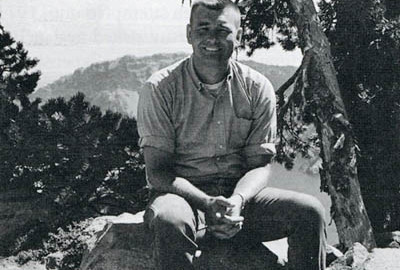Weren’t a lot of the faculty funded through grants?
Faculty in the department of fisheries and wildlife were, for the most part, teaching some courses and getting grants. Donaldson received his grant from the Office of Water Resources, in the Department of Interior. That money was funneled to the Water Resources Research Institute at OSU. They, in turn, had this fund where people could request money.
When I graduated, Donaldson brought on a new guy named Ross Kavanagh to do a masters. I spent quite a busy summer in 1970. My daughter was born in July and I was doing a report for Donaldson on the project. I was also helping train Ross Kavanagh for his work. I took him [Kavanagh] to Crater a couple of times with me and he didn’t like that at all.
Why?
He was a smoker and just about died coming up the trail. I finally got him interested in coastal lakes, and by then Donaldson was really kind of out of the picture. I kind of took charge of Kavanagh and we took field trips down to the coast and he selected Devils Lake, Mercer, Munsel, Siltcoos, Woahink as his study lakes (7). We would go over there once every two weeks or so through the summer. By the middle of October, 1970, I had completed the report. I still couldn’t find work and things were looking kind of bad because the winter was coming. I finished the report and the Water Resources Research Institute published it. At least it showed accountability. We spent thousands of dollars and I thought we should have something to show for it than just a couple of theses.
Was this your post-doc?
No, not really. I received a small stipend for it. I was waiting to hear about a job. When October rolled around I finished it. Ross Kavanagh was pretty well trained and ready to go on his own. Things were starting to get tough. My wife and I had a three month old baby and she decided to go back to work. I had an offer from EPA in North Carolina, but didn’t want to go there. So I thought we’ll stick it out here and I’ll wait for a job. I kept sending out letters but nothing turned up. I finally got desperate and decided I would put my name in at the employment office because I needed to work. I couldn’t sit around home. The university didn’t have anything for me. Two job offers came. One was washing dishes in a restaurant. The other one was working for a guy named Timian who was a contractor in Corvallis. There are a couple streets named after him; Timian Way or something. He was building these FHA 235 homes and he needed people to frame houses (8). I said I’ll take the job and started working there in October. It paid minimum wage, with no union benefits and you couldn’t work when it rained because he’d lay off the crew. I wasn’t making much money but worked well enough that when he laid off the framing crew, he had me go over to his garage and paint bats. That job went through Christmas. In January I got a call from Harry Phinney, who had been on my doctoral committee. He was a professor there in the Department of Botany and Plant Physiology at OSU. He said: “Doug, I heard that you’re working as a carpenter. I think I can do better for you. I’m working on a grant that the Army Corps of Engineers has given us to study Hills Creek Reservoir.” He added: “It would be great if you could come on board and do the limnology for us. We need to have a limnological component there and I’m in charge of that part, but I don’t want to go in the field all the time.” I said great so I did that and that as my post-doc. I was called a research associate on that one, and I worked at Hills Creek Reservoir near Oakridge until September, 1971. There were a lot of people working on that project, engineers, hydrologists and soils people. It was a turbidity study.


